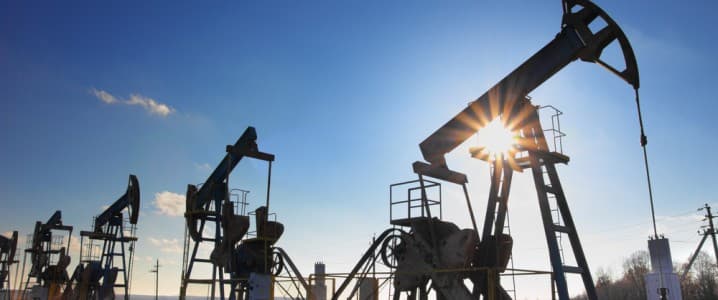Business
U.S. Onshore Oil Production Reaches Record 1.7 Million BPD

U.S. crude oil production from onshore federal lands has reached a record high of 1.7 million barrels per day (bpd) in 2024, according to the Energy Information Administration (EIA) and the U.S. Department of the Interior. This figure represents a dramatic sixfold increase since 2008, significantly outpacing the overall national crude output, which has nearly tripled to 13.2 million bpd over the same period. The surge in production is largely attributed to increased activity in New Mexico’s segment of the Permian Basin, where leasing, permitting, and drilling have escalated in recent years.
New Mexico has emerged as the focal point of the federal onshore oil boom, accounting for the majority of federal land drilling permits approved and new well bores initiated from fiscal year 2020 through 2023. The state’s geological advantages, coupled with favorable permitting conditions and existing infrastructure, have positioned it as a leader in federal onshore oil production.
Comparison with Offshore Production
In contrast, federal offshore oil production has not kept pace with its onshore counterpart. While output from the Gulf of Mexico saw a slight increase, it remained at 1.8 million bpd in 2024, only marginally ahead of onshore levels and reflecting a slower growth trajectory.
Natural gas production presents a slightly different narrative. Onshore federal lands produced 4.2 trillion cubic feet (Tcf) of natural gas in 2024, up from 3.2 Tcf in 2020. This growth aligns closely with national gas production, which rose from 33.8 Tcf to 37.8 Tcf during the same timeframe. The share of U.S. natural gas sourced from onshore federal lands also increased modestly from 9.6% to 11%, marking a significant turnaround from a previous long-term decline.
In stark contrast, federal offshore gas production has declined sharply, plummeting to just 0.8 Tcf in 2024, representing less than one-third of its level in 2005. This shift indicates that the new growth frontier for oil and gas production is firmly established on land, particularly in regions like New Mexico, rather than beneath the ocean.
The ongoing developments in U.S. onshore oil production underscore a significant transformation in the energy landscape, driven primarily by regional advancements and changing market dynamics. As production continues to rise, it will be crucial to monitor the implications for energy policy and market stability across the country.
-

 World5 months ago
World5 months agoSBI Announces QIP Floor Price at ₹811.05 Per Share
-

 Lifestyle5 months ago
Lifestyle5 months agoCept Unveils ₹3.1 Crore Urban Mobility Plan for Sustainable Growth
-

 Science4 months ago
Science4 months agoNew Blood Group Discovered in South Indian Woman at Rotary Centre
-

 World5 months ago
World5 months agoTorrential Rains Cause Flash Flooding in New York and New Jersey
-

 Top Stories5 months ago
Top Stories5 months agoKonkani Cultural Organisation to Host Pearl Jubilee in Abu Dhabi
-

 Sports4 months ago
Sports4 months agoBroad Advocates for Bowling Change Ahead of Final Test Against India
-

 Science5 months ago
Science5 months agoNothing Headphone 1 Review: A Bold Contender in Audio Design
-

 Top Stories5 months ago
Top Stories5 months agoAir India Crash Investigation Highlights Boeing Fuel Switch Concerns
-

 Business5 months ago
Business5 months agoIndian Stock Market Rebounds: Sensex and Nifty Rise After Four-Day Decline
-

 Sports4 months ago
Sports4 months agoCristian Totti Retires at 19: Pressure of Fame Takes Toll
-

 Politics5 months ago
Politics5 months agoAbandoned Doberman Finds New Home After Journey to Prague
-

 Top Stories5 months ago
Top Stories5 months agoPatna Bank Manager Abhishek Varun Found Dead in Well









